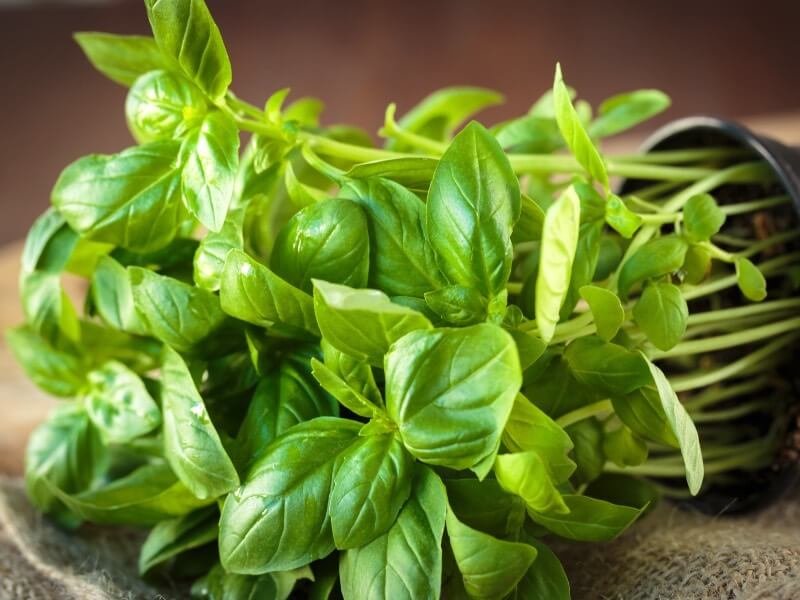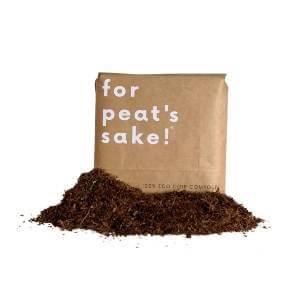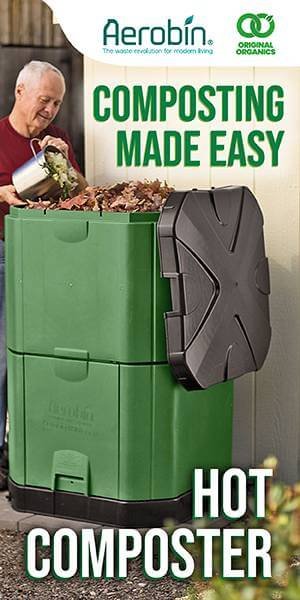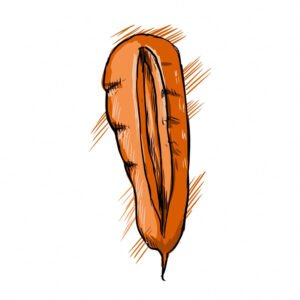It would be best if you got a deep pot for your basil as they have deep roots; also, ensure that the pot has good drainage; basil is not tolerant of water stress.
Growing Basil – Location & Light
Location wise your basil need plenty of sun and warmth. If your windowsill is typically cooler, has a draft, or at night temperature drops considerably; it will not thrive being placed here and cause the leaves to droop and fade after a short amount of time.
Basil plants will appreciate a minimum of four hours of full sun, and as plants grow, rotate the pot around to have equal growth on each side and lean towards one side. If you use fluorescent bulbs, keep these on for 12 hours, ensuring that the lights are kept about 2-4 inches away from the plant. If the leaves touch the bulb, this could burn them!
Growing Basil – Watering
Like most herbs, keep your basil moist, but ensure it’s not soaking wet. They will not enjoy going to bed at night with wet leaves, so it’s best to water in the morning before they are in direct sunlight if you notice the leaves wilting water as soon as you can. Basil plants enjoy being misted frequently.
Growing Basil – Food / Feeding
Your indoor Basil plant will require feeding, dependent on a few factors, such as the variety and purpose. If you notice that leaves turn a pale green colour, it’s a good idea to start using liquid fertiliser.
Organic fertiliser is the best option if you are using your basil for food; this will benefit the pH levels in the soil.
Growing Basil – Temperature
Basil are very particular when it comes to the temperature they like, and they love the warmth. Ideally, they would prefer 27-30 degrees both day and night.
But, if they get too cold, they will let you know by their leaves wilting and discolouring within 24 hours. Basil will not like becoming too dry.
Growing Basil – Soil
Basil will thrive indoors with a loose, rich, fertile and well-drained dry potting mix; they will typically grow in anything. A neutral pH is the best option.
Growing Basil – Harvesting
Basil is well known for freezing well; although it can shrink slightly, it should still be treated the same when added to recipes. To freeze basil, remove leaves from the stems, safely place them in boiling water or steam (this method is known as blanching), and then put into cold running water, halting the cooking process.
Dry these completely before place into an airtight container or freezer bag separating layers with wax paper. Another good option that adds a small touch of basil flavour, but without overpowering other flavours in your cooking, is preserving in oil.
You will again need to blanch your basil leaves and then place them into a blender or food processor; add one or two cups of olive oil, and ½ a teaspoon of salt per cup of basil. Pulse until blended, then either strain the mixture or leave as it is for a stronger flavour.
Store in a glass in the refrigerator and try to use it within the week; equally, you can freeze in ice cube trays.
If your plant starts to look overcrowded, be sure to cut these back to thin them out. Cut at the soil line to snip extra seedlings.
Let's go Shopping...
Products Coming Soon!




































